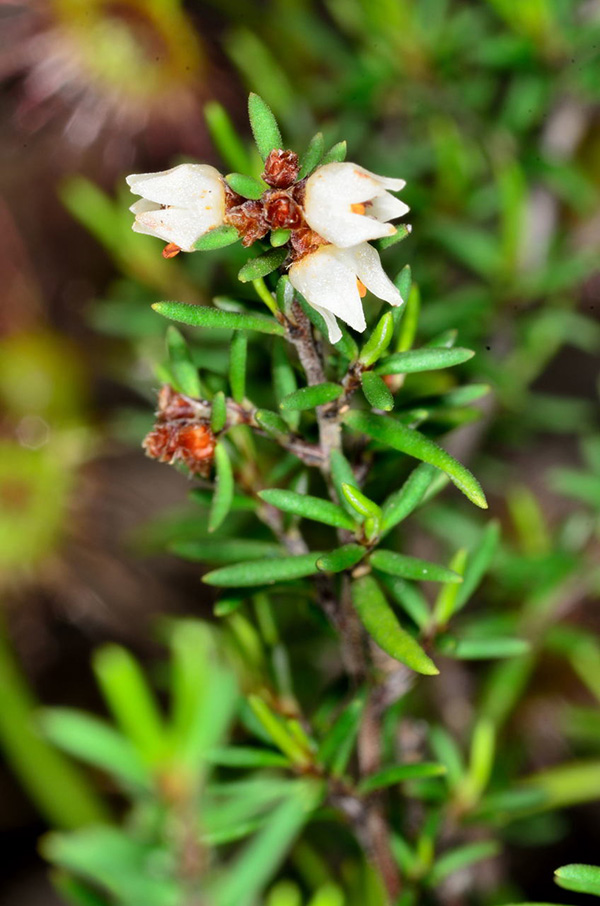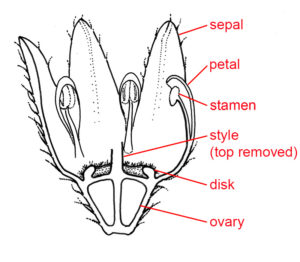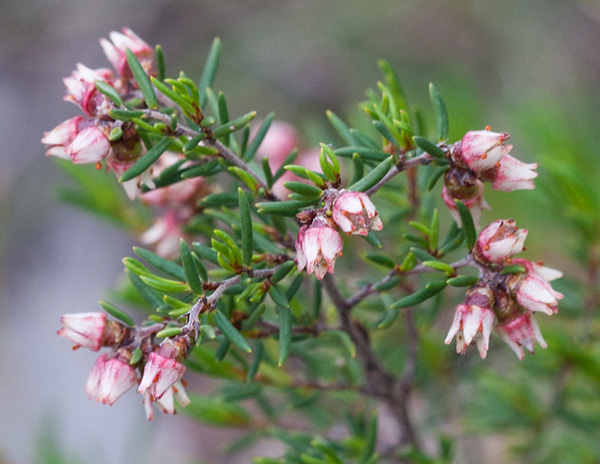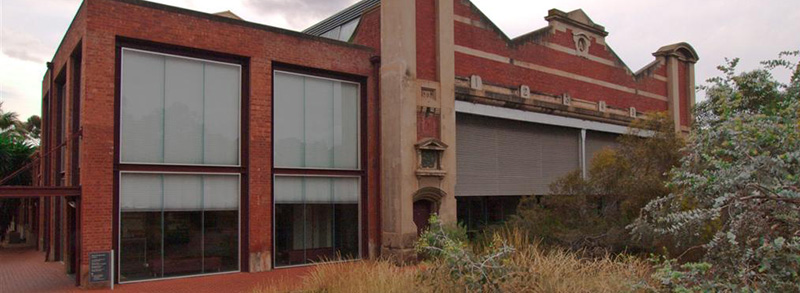The State Herbarium of South Australia has chosen Cryptandra tomentosa Lindl. as Plant of the Month. It is widespread in south-eastern Australia and also occurs in DEWNR’s Park of the Month for March 2017, Anstey Hill Recreation Park. The Park includes the site of the former Newman’s Nursery, which featured in an article by Taplin & Symon, published in the Journal of the Adelaide Botanic Gardens (21.3mb PDF).
Cryptandra tomentosa was named by British botanist John Lindley from plant material collected by exporer Thomas Mitchell in the Grampians, Victoria. From the account of Mitchell’s journey, it is clear that the collections were made on 15 July 1836, when the expedition party was on Mt Willam. The new species was described to be “remarkable on account of its downy leaves”.
Typical Cryptandra tomentosa plants are small shrubs, with inconspicuous white flowers clustered towards the end of the branches; the flowers tend to turn reddish or pinkish when older. Leaves are narrow and up to 5 mm long, rarely longer, the margins are usually tightly rolled so that only the midrib is visible on the lower surface. The upper surface of the leaves is glabrous and smooth, however, not “downy” as described by Mitchell. What is hairy in C. tomentosa are the stems, especially young ones, and the lower surface of the leaves, which is usually obscured. Some early botanists believed the red- and white-flowered forms were different and described them as separate species, e.g. C. erubescens F.Muell. was published as a name for a red-flowered specimen of C. tomentosa.
Flowers in the plant family Rhamnaceae are quite unique in that the petals are placed opposite the stamens (obhaplostemonous) and “hooding” the anthers, whereas in “standard” angiosperm flowers, the stamens are opposite the sepals. Sepals in Rhamnaceae are colourful and are the most conspicuous parts of the flower; the typical condition for angiosperms is that the sepals are green and smaller than the petals. Most Rhamnaceae flowers also have a conspicuous nectar-secreting disk that covers or surrounds the ovary. In the genus Cryptandra, all flowers are also surrounded by numerous brown bracts.
The name C. tomentosa was applied wrongly to many plants in south-eastern Australia, even Western Australia. The taxa related and similar to C. tomentosa and C. amara Sm. are currently being revised by State Herbarium botanist Jürgen Kellermann and his colleague Frank Udovicic from the National Herbarium of Victoria. Some taxa that had been named in the past as C. tomentosa are now known as Cryptandra sp. Floriferous, Cryptandra sp. Hiltaba, Cryptandra campanulata Schltdl., C. nutans Steud. and C. myriantha Diels (interestingly, the only species of Cryptandra to occur on both sides of the Nullarbor).











You must be logged in to post a comment.